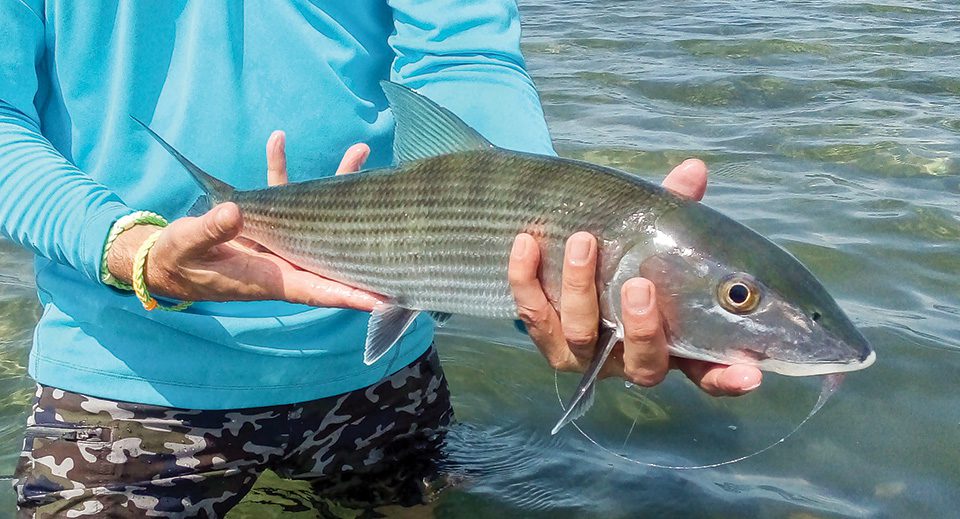By Will Schmidt
When we landed on Grand Bahama, the sun greeted our wintery white faces, and a 70-degree day with a light breeze warmed us to the core. Unfortunately, by morning, the greeting changed to 25 mph winds, which made conditions less than optimal for fly fishing.
At home, we might have changed to conventional tackle or even skipped the trip all together, but we came here to fly fish for bonefish, and fly fish we would. Rather than get down on the conditions, we made some tactical changes and used the wind the best we could to our advantage.
One benefit of this scenario is the fish tend to be less spooky in shallow water. The noise generated by the wind and the waves allows anglers to get closer without spooking the fish. In fact, glass calm days can be more challenging than some of the breezier ones. Here are a few tips to help out on those blustery days.
- Shortening your leader can make a huge difference in accuracy. Fly line tracks relatively straight through wind, especially if you are double hauling. But that last 10 feet or so can be a real crap shoot when the wind is kicked up over 20 mph. Shortening the leader can really help with accuracy, especially in a crosswind.
- Using a heavier fly has advantages. With wave action, weight helps the fly get down to the bottom faster, and that’s where the fish are feeding. Even in skinny water, where you would normally use just bead chain eyes, don’t be afraid to move up to some lead eyes as the disturbance caused by the wind helps conceal the splash.
- Consider stepping up one rod weight. There is no doubt a heavier rod makes a huge difference in punching through the wind. Sometimes your best bet is to step up to make sure you can get the fly in front of the fish. Another option is to over-line your rod, which is moving up to a line that’s a weight heavier than the rod is rated for. This helps load the rod on the cast, which delivers a more powerful cast.
- The best thing is practice. If you are going to spend good money to go on a trip, you want to give yourself the best chance for success. Most fly fishers only practice casting as far as possible. I don’t worry about that. Windy or not, you rarely need to cast more than 60 feet on the flats. Instead, concern yourself with quick accurate casts. And don’t forget to practice in the wind, not just head-on, but at every angle. A crosswind can move your fly off target, and casting 5 feet behind a fish rarely produces a strike.
In the end, we didn’t let the wind blow our chances for success; we prevailed with some great Bahamas bones.
Will Schmidt is a seasoned tournament angler and has been writing about fishing for more than two decades.
